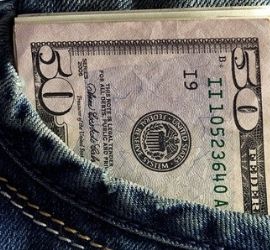What Is the Consumption Function?
 The consumption function is an economic formula that represents the relationship between total consumption and gross national income.
The consumption function is an economic formula that represents the relationship between total consumption and gross national income.
The consumption function, or Keynesian consumption function, is an economic formula. It represents the functional relationship between total consumption and gross national income. It was introduced by British economist John Maynard Keynes. He argued the function could be used to track and predict total aggregate consumption expenditures. The consumption function is the whole schedule. It describes the amounts of consumption at various levels of income.
Keynes believes that consumption is a function of income. Demand for a good depends upon its price. Similarly, the consumption of a community depends upon the level of income. The consumption function relates the amount of consumption to the level of income. When the income of a community rises, consumption also rises. How much consumption rises in response to a given increase in income depends upon the marginal propensity to consume.
Consumption Function Explanation
The classic consumption function attempts to predict consumer spending. The assumption is that this spending is wholly determined by income and the changes in income. If the theory true, aggregate savings should increase proportionally as the gross domestic product (GDP) grows over time. Keynes’ objective was to create a mathematical relationship between disposable income and consumer spending. The stability of the consumption function is based in part on Keynes’ Psychological Law of Consumption. However, most post-Keynesian economists admit the consumption function is not stable in the long run. Historical observation shows consumption patterns change as income rises.
The consumption function should be carefully distinguished from the amount of consumption. By definition, the consumption function means the whole schedule. And, this schedule shows consumption at various levels of income. This should not be confused with specific points of consumption. The amount of consumption means the amount consumed at a specific level of income.
Consumption Function Calculation
The consumption function is represented as:
Consumption Function Formula: C = A + MD
- C = Consumer spending
- A = Autonomous consumption
- M = Marginal propensity to consume
- D = Real disposable income
Consumption Function – Assumptions and Implications
Much of the Keynesian theory revolves around savings and income. Specifically, the frequency with which a given population spends or saves new income. Careful consideration is given to the multiplier, the consumption function, and the marginal propensity to consume. These values are crucial to accurately determine spending and aggregate demand. Also, the consumption function is assumed stable and static. All expenditures are passively determined by the level of national income. However, the same is not true of savings. Keynes called savings an investment. And, government spending is also another concept Keynes often defined as an investment.
For the model to be valid, the consumption function and independent investment must remain constant. At least long enough for national income to reach equilibrium. At equilibrium, business expectations and consumer expectations match up. One potential problem is that the consumption function cannot handle changes in the distribution of income and wealth. In reality, autonomous consumption and the marginal propensity to consume change when distribution and wealth change.
Expectations
The Keynesian model suggests that as income rises, consumer spending will rise. However, spending will increase at a lower rate than income.
- At low incomes, people will spend a high proportion of their income. The average propensity to consume could be one or greater than one. This means people spend everything they have. When you have a low income, you don’t have the luxury of being able to save. You need to spend everything you have on essentials.
- As incomes rise, people can afford the luxury of saving a higher proportion of their income. Therefore, as incomes rise, spending increases at a lower rate than disposable income. People with high incomes have a lower average propensity to spend.
- If you cut income tax for those with a low income, they tend to have a higher marginal propensity to consume this extra income. Therefore, there is a large increase in spending.
- If you cut income tax for those with a higher income, they will save a greater portion. People with high incomes will tend to have a lower marginal propensity to consume.
Alternatives to Keynes
Over time, other economists have made adjustments to the Keynesian equation. Additional variables can be incorporated to yield a more accurate function. These variables include employment uncertainty, borrowing limits, or even life expectancy.
Life cycle theory – Many standard models stem from the life cycle theory of consumer behavior introduced by Richard Brumberg and Franco Modigliani. Their model made adjustments based on how income and liquid cash balances affect an individual’s marginal propensity to consume. They predict that poorer individuals likely spend new income at a higher rate than wealthy individuals. The life cycle theory further suggests that spending will be dependent on current income, future expected income, and also a function of wealth.
Permanent income hypothesis – Milton Friedman offered a simple version of consumption. The Friedman model distinguishes between permanent and temporary income. It also extends Modigliani’s use of life expectancy to infinity. This theory suggests that a person’s consumption is determined not just by current income. It is also influenced by future expected income. It suggests that consumers will attempt to smooth consumption over their lifetime. For example, borrowing as a student or running down savings in retirement.
More sophisticated functions may even substitute disposable income, which takes into account taxes, transfers, and other sources of income. Still, most empirical tests fail to match up with the consumption function’s predictions. Statistics show frequent and sometimes dramatic adjustments in the consumption function.
Up Next: What is Extrinsic Value in Options Trading?
 Extrinsic value in options trading is the difference between an option’s strike price and the underlying asset’s price. It is also referred to as the premium.
Extrinsic value in options trading is the difference between an option’s strike price and the underlying asset’s price. It is also referred to as the premium.
It is the portion of the worth that has been assigned to an option by factors other than the underlying asset’s price. The opposite of extrinsic value is intrinsic value, which is the inherent worth of an option. The extrinsic value rises with an increase in volatility in the market.
The extrinsic value of an option is calculated by taking the difference between the market price of an option (called the premium) and its intrinsic price – the value of an option’s contract in relation to the underlying at expiration or if exercised.




